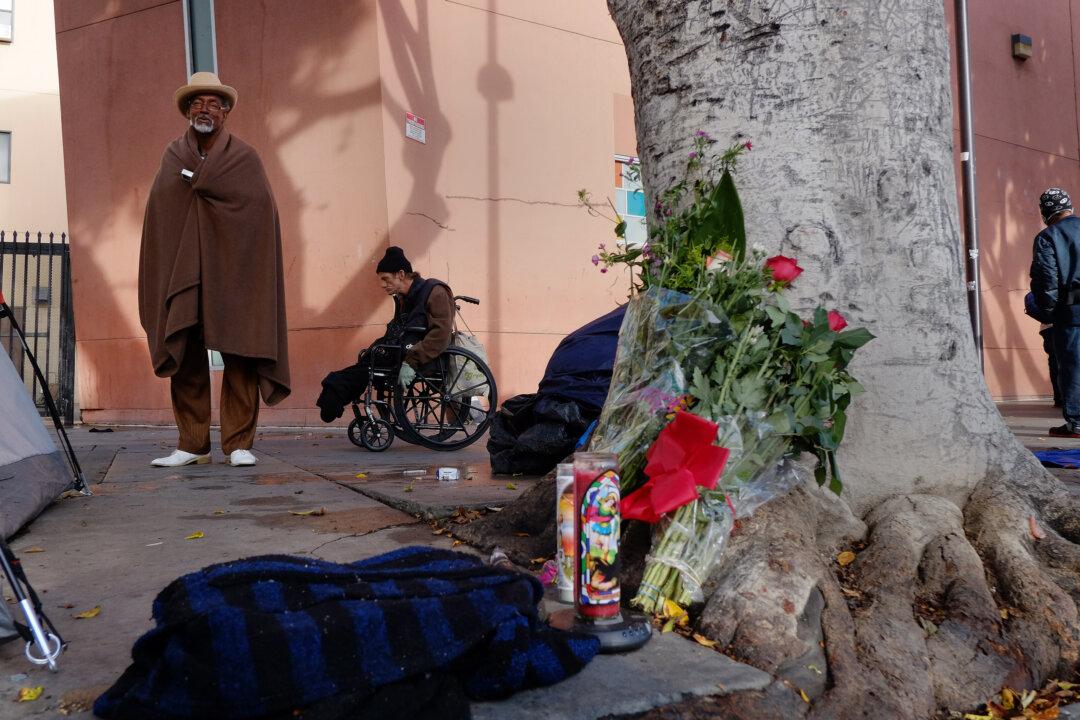A violent confrontation between Los Angeles police and a homeless man Sunday—caught on video by a bystander—is the latest police shooting that has captured the nation’s attention.
In the video, which has already garnered more than 5 million views at the time of writing, four officers are seen wrestling with a man on the ground. Seconds later, gun shots are heard and the man on the ground goes limp.
The officers were initially responding to a robbery call on San Pedro Street around noon Sunday, according to a Los Angeles Times report.
The Los Angeles Police Department (LAPD) said at a Monday press conference that an altercation ensued when officers tried to look inside the man’s tent.
During the confrontation, the man (still unidentified) tried to grab one of the officer’s gun. Two officers and a sergeant then fired their weapons at him.





